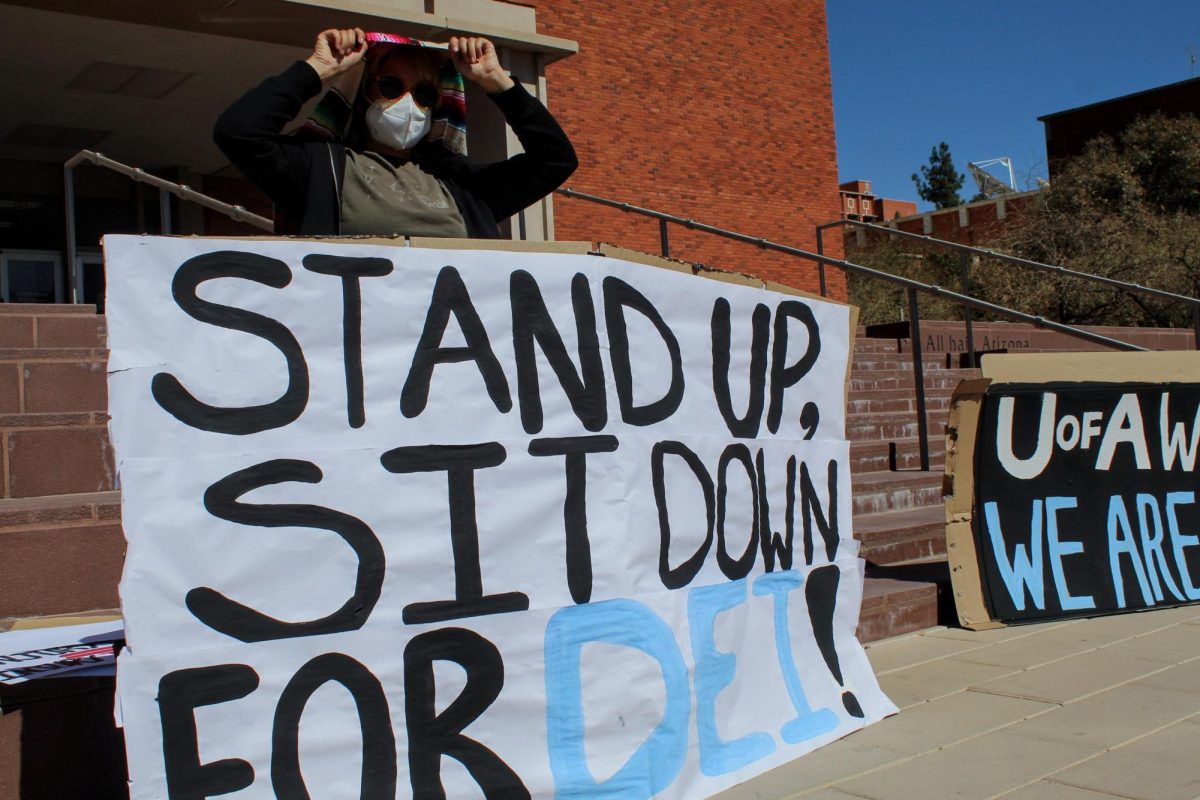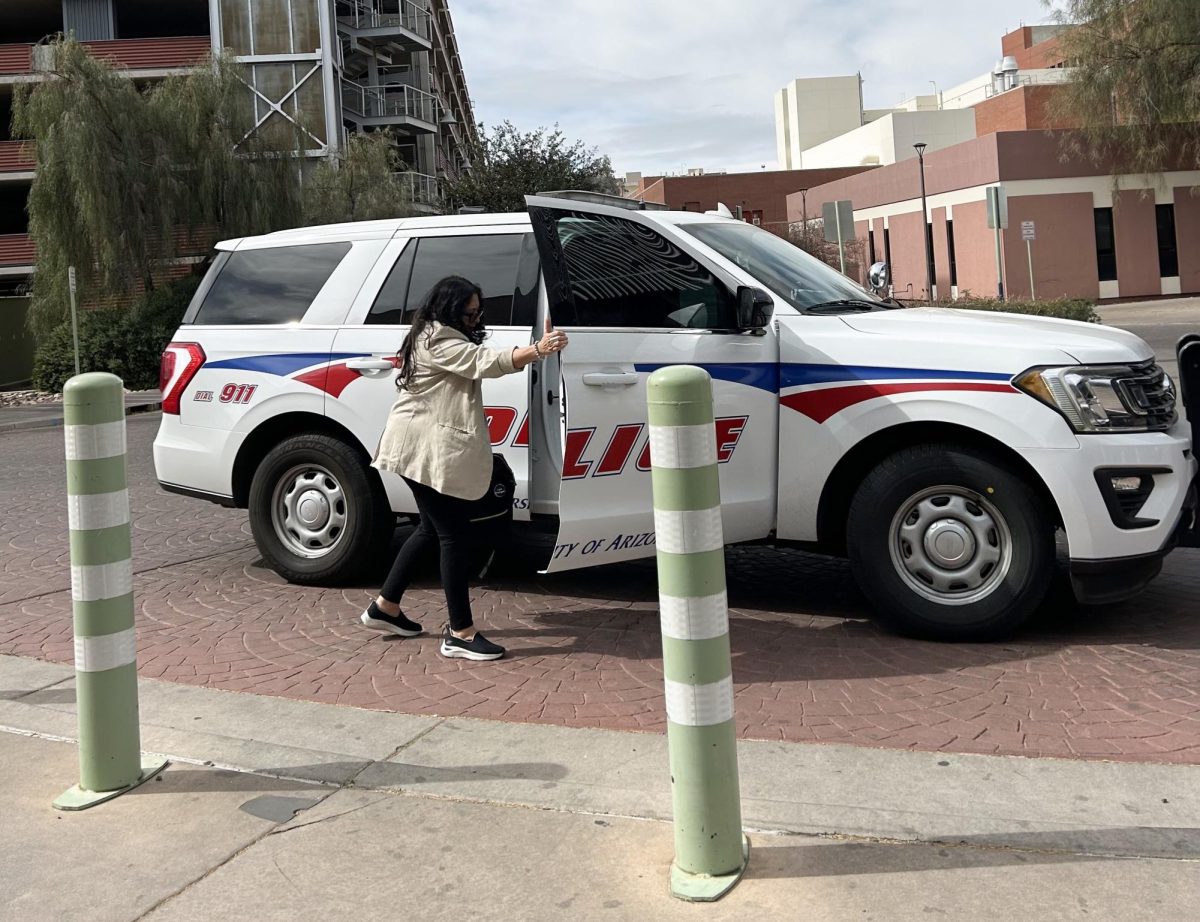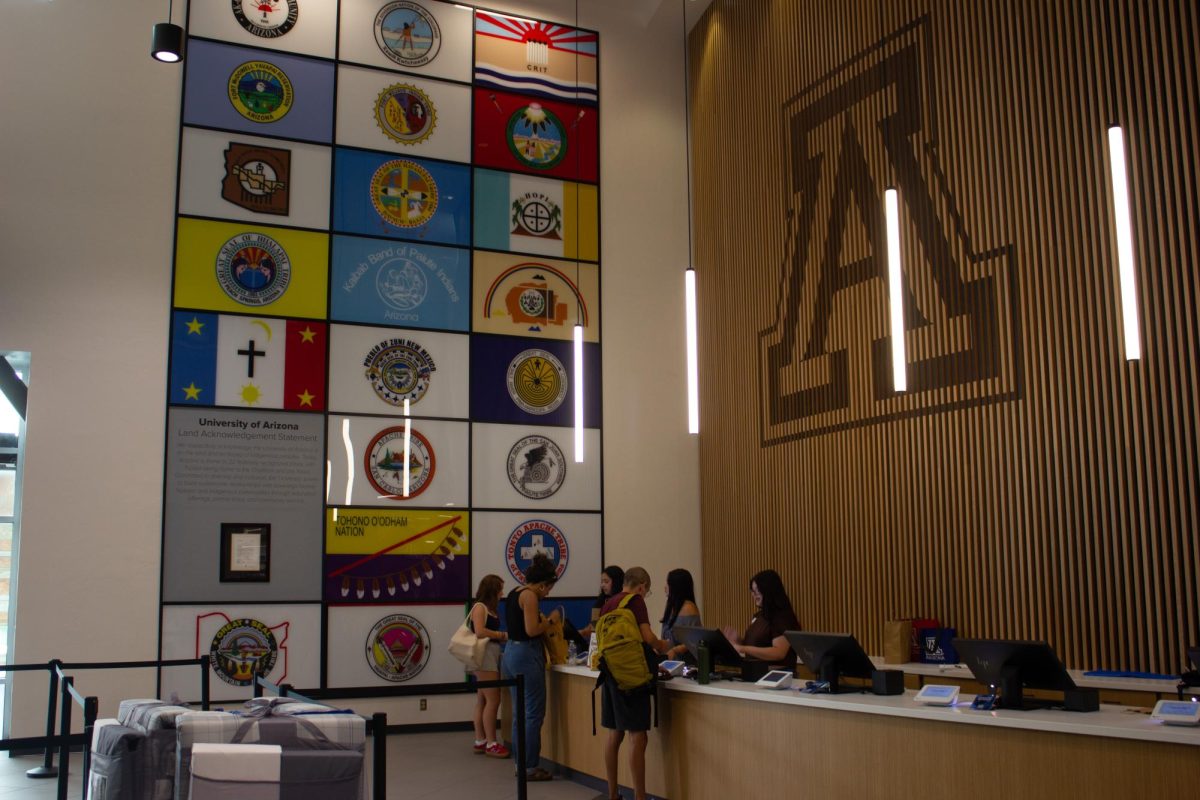This week, the UA heads into a new semester in the midst of what President Robert Shelton called “”the most difficult economic time in many generations”” in an e-mail to university employees sent last night. In part one of a two-part series, the Arizona Daily Wildcat sat down with President Shelton to discuss his plans for coping with an unstable and shrinking budget.
Daily Wildcat: What do you perceive to be the biggest challenges facing the university this year, and what are your plans to address those challenges?
Robert Shelton: Well, the obvious one, the elephant in the room, is the budget. We don’t have a state budget yet. We know the biggest cut we can take because there is a limit — called “”maintenance of effort”” — applied by the U.S. Department of Education on any state that takes (federal) fiscal stabilization funds. Our governor wonderfully has taken all that was available, about $830 million, and distributed that to K-12 and the universities. If you accept those funds, then you as a state can’t cut the state budget for K-12 or the universities below 2006 levels. We’re much closer than the other two state universities to that level.
DW: Does that mean that the UA has received more cuts than the other two universities?
RS: No, it means that over the years money has come out in different ways. For example, ASU has, appropriately, received a lot of enrollment increase money because they’ve increased enrollment. They should get that money; fair is fair. That growth is something we haven’t taken on, although we’re changing that a bit this year. So, the budget is a major situation. How are we dealing with that? Well, for this year we do have a little over $60 million from the federal government through Gov. Brewer’s office in fiscal stabilization funds. We’re using that to try to get through the year, to plug a lot of holes and to mitigate the tuition surcharge.
DW: Because that’s one-time funding, correct?
RS: That’s one-time funding. Last March the regents added a tuition surcharge of $766. The regents gave us a formula to calculate how much the surcharge really needs to be, and we calculated that it should be $2,500, believe it or not. They said, “”Whoa, we can’t swallow that,”” so they backed it off. What we’ll do is use stabilization funds to bridge that gap. So, for fiscal year 2010 we have good plans on one-time money. This gives us time to reorganize and become even more efficient and reduce administrative costs to get through this year. We’ll have a similar amount of one-time money in fiscal year 2011. But then it’s done. So fiscal year 2012 is the fiscal cliff that we’re trying to figure out how to soften. We know we can’t replace all of the state funds that have been cut out. That was $77 million last year, might be another $20 million this year, so you’re getting close to $100 million. You just can’t do that. You can’t raise tuition that much, you can’t go out and get gifts for that much, you can’t go out and get federal dollars for that much.
We’re looking at a plan to replace maybe half, or two-thirds, or 60 percent of that money so that we can stabilize our core operating budget. And of course that has to come from tuition, although I know students and families don’t like to hear that, and it has to come from additional efficiencies, and it has to come from attracting more federal dollars and more gift dollars. So it’s a combination. The good news is we have a couple of fiscal years to work that out; the bad news is we only have a couple of years to work that out. What we want to do is avoid any precipitous action. If you know as a student coming in that your tuition will go up 7 percent every year, you can plan for that. But if you know that one year is going to be flat, the next year is going to be 20 percent, the next year is going to 56 percent, it’s very hard to plan for that. We’re trying to provide some predictability.
DW: You used the term “”efficiencies.”” What do you mean by that?
RS: One example is CLAS (Colleges of Letters, Arts and Science). When we combine five administrative offices, there should be efficiencies there. Do we need four or five procurement officers? Do we need four or five head advisers? How can we eliminate some of those costs while not cutting into the things that students really need? Students have to get classes and they have to get advising.
Over the last few years in my office, for example, we’ve eliminated permanent positions and we’ve backfilled with student help. That way, students have on-campus jobs, and of course students work really hard for less money. In addition, you may recall from last year that we eliminated some low-demand degree programs. Over time, those cuts will shift how those departments are staffed.
DW: You spend a lot of time speaking with a broad range of people on the UA campus. Are there any issues that you hear about again and again?
RS: Right now, there’s just a lot of excitement and a lot of positive feeling. I’m sure you can think back to how excited you were to go to college. My kids couldn’t wait. Combine that with the parents’ enthusiasm, and it’s a very positive time right now. You know, the challenge, frankly, is the state budget and where we’re going to go — not just for this year. We’re in a period here where we can work on ideas. The core question is whether the state of Arizona — and by that I mean the people of Arizona, not just the legislature — want to support public education. And it’s not free.
What we’ve seen over the years is a shift significantly from public support for education to the students and the families supporting education. And there’s an argument for that. It’s a private good, you’re going to earn more money, you’re going to have horizons lifted and you’re going to live a better life if you get that college education, so you should have to pay for it. But of course there’s a societal benefit too, right? When you go to school, in cold hard cash you’re paying more taxes into society but you’re also less likely to go to prison, you’re less likely to be a drain on society, you’re going to live a healthier life, you’re going to influence your neighborhood, raise your kids and all these things are societal benefits.
The fundamental question this country has to deal with is, “”Do we have the right balance between public support for education and the private support coming from the students and their families themselves?”” It should be an interesting discussion that’ll take place in this state and nationally over the next few years.
DW: Do you think that in order to solve the budget crisis we’re going to need to see more support from the public?
RS: It’s a question of balance. I think the governor, in terms of the short-term budget, has it exactly right: we need to make more cuts and we need to raise more money. So then there’s the subtler question of how to raise more money. Do you do it on something that’s regressive, taxes the wealthy? These are very hard questions, and I’m glad I’m not a legislator.
I think for the question of education, it isn’t that students and their families won’t have to pay and society can bear the total brunt or the other way around, it’s a question of where we are on that spectrum. Maybe society needs to move more. I mean, this fall tuition and mandatory fees are about $7,000. Now that’s a lot of money if you don’t have it. But on the other hand, you can say that that might be the best $7,000 you ever spent.









